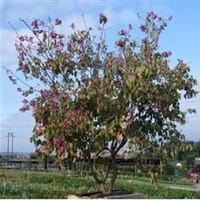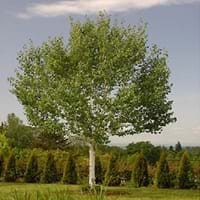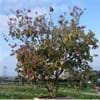Life Span
Perennial
Perennial
Origin
Hybrid origin, Southeastern Asia
India, Nepal, China
Types
Bauhinia. blakeana, Bauhinia variegata Candida.
Not Available
Number of Varieties
Not Available
Habitat
tropical environments
Mountains
USDA Hardiness Zone
10-15
5-7
Sunset Zone
H1, H2, 13, 19, 21, 23, 24
3a, 3b, 4, 5, 6, 7, 8, 9, 10, 11, 14, 15, 16, 17
Habit
Oval or Rounded
Pyramidal
Flower Color
Pink, Light Pink, Rose, Burgundy, Lavender, Violet
Tan, Brown
Flower Color Modifier
Bicolor
Bicolor
Fruit Color
Not Available
Not Available
Leaf Color in Spring
Green, Blue Green
Yellow green
Leaf Color in Summer
Green, Blue Green
Dark Green
Leaf Color in Fall
Green, Blue Green
Yellow
Leaf Color in Winter
Green, Blue Green, Yellow green
Not Available
Leaf Shape
Orbiculate
Cordiform
Plant Season
Spring, Fall, Winter
Spring, Summer, Fall, Winter
Sunlight
Full Sun, Partial Sun
Full Sun, Partial Sun
Type of Soil
Loam, Sand
Loam, Sand
The pH of Soil
Acidic, Neutral
Acidic, Neutral
Soil Drainage
Well drained
Average
Bloom Time
Late Fall, Early Winter, Winter, Late Winter
Early Spring
Tolerances
Drought, Salt, Variety of soil types
Not Available
Where to Plant?
Ground
Ground
How to Plant?
Grafting, Layering, Stem Cutting
Grafting, Stem Cutting
Plant Maintenance
Medium
Medium
Watering Requirements
Requires regular watering, Water more in summer
Requires watering in the growing season
In Summer
Lots of watering
Average Water
In Spring
Moderate
Moderate
In Winter
Average Water
Average Water
Soil pH
Acidic, Neutral
Acidic, Neutral
Soil Type
Loam, Sand
Loam, Sand
Soil Drainage Capacity
Well drained
Average
Sun Exposure
Full Sun, Partial shade, Partial Sun
Full Sun, Partial Sun
Pruning
Cut or pinch the stems, Prune ocassionally, Remove damaged leaves, Remove dead branches, Remove dead leaves
Remove damaged leaves, Remove dead branches, Remove dead leaves
Fertilizers
Less fertilizing
Fertilize in early spring, Fertilize in late fall, slow-release fertilizers
Pests and Diseases
Bacterial leaf scorch, Borers, Caterpillars, Leaf spot, Mites
Honey fungus, Leaves with brown tip, Phytophthora Root Rot, Powdery mildew, Verticillium Wilt
Plant Tolerance
Drought, Salt, Variety of soil types
Dry Conditions, waterlogging, Wet Site
Flowers
Showy
Insignificant
Flower Petal Number
Single
Not Available
Foliage Texture
Medium
Medium
Foliage Sheen
Matte
Matte
Attracts
Bees, Birds
Not Available
Allergy
Not Available
Not Available
Aesthetic Uses
Beautification, Bouquets, Cottage Garden, Showy Purposes
Not Used For Aesthetic Purpose
Beauty Benefits
Not Available
Weightloss
Environmental Uses
Air purification
Air purification
Medicinal Uses
No Medicinal Use
anti-cancer, anti-inflammatory, antimicrobial, Antioxidants, Antiseptic, Carminative
Part of Plant Used
Flowers, Leaves, Seeds
Bark, Leaves
Other Uses
Food for insects, Used As Food
Used in construction, Wood is used in construction
Used As Indoor Plant
No
No
Used As Outdoor Plant
Yes
Yes
Garden Design
Container, Feature Plant, Hedges, Mixed Border, Screening / Wind Break, Shade Trees, Street Trees, Tropical
Feature Plant, Shade Trees
Botanical Name
BAUHINIA blakeana
BETULA utilis
Common Name
Blake's Butterfly Tree, Chinese Orchid Tree, Hong Kong Orchid Tree
Himalayan Birch
In Hindi
हांगकांग आर्किड पेड़
हिमालय सन्टी
In German
Hong Kong Orchidee Baum
Himalaya-Birke
In French
Hong Kong arbre d'orchidée
bouleau de l'Himalaya
In Spanish
árbol de orquídea Hong Kong
abedul del Himalaya
In Greek
δέντρο ορχιδέα Χονγκ Κονγκ
Himalayan σημύδας
In Portuguese
árvore de orquídea de Hong Kong
bétula Himalaia
In Polish
storczyk drzewo Hong Kong
Himalayan brzoza
In Latin
Hong Kong Orchid ligno
Birch Himalayan
Phylum
Angiosperms
Tracheophyta
Class
Magnoliopsida
Magnoliopsida
Family
Fabaceae
Betulaceae
Clade
Angiosperms, Eudicots, Rosids
Angiosperms, Eudicots, Rosids
Tribe
Not Available
Not Available
Subfamily
Caesalpinioideae
Not Available
Number of Species
Not Available
Importance of Hong Kong Orchid Tree and Himalayan Birch
Want to have the most appropriate plant for your garden? You might want to know the importance of Hong Kong Orchid Tree and Himalayan Birch. Basically, these two plants vary in many aspects. Compare Hong Kong Orchid Tree and Himalayan Birch as they differ in many characteristics such as their life, care, benefits, facts, etc. Every gardener must at least have the slightest clue about the plants he wants to plant in his garden. Compare their benefits, which differ in many ways like facts and uses. The medicinal use of Hong Kong Orchid Tree is No Medicinal Use whereas of Himalayan Birch is anti-cancer, anti-inflammatory, antimicrobial, Antioxidants, Antiseptic and Carminative. Hong Kong Orchid Tree has beauty benefits as follows: Not Available while Himalayan Birch has beauty benefits as follows: Not Available.
Compare Facts of Hong Kong Orchid Tree vs Himalayan Birch
How to choose the best garden plant for your garden depending upon its facts? Here garden plant comparison will help you to solve this query. Compare the facts of Hong Kong Orchid Tree vs Himalayan Birch and know which one to choose. As garden plants have benefits and other uses, allergy is also a major drawback of plants for some people. Allergic reactions of Hong Kong Orchid Tree are Not Available whereas of Himalayan Birch have Not Available respectively. Having a fruit bearing plant in your garden can be a plus point of your garden. Hong Kong Orchid Tree has no showy fruits and Himalayan Birch has no showy fruits. Also Hong Kong Orchid Tree is not flowering and Himalayan Birch is not flowering . You can compare Hong Kong Orchid Tree and Himalayan Birch facts and facts of other plants too.





